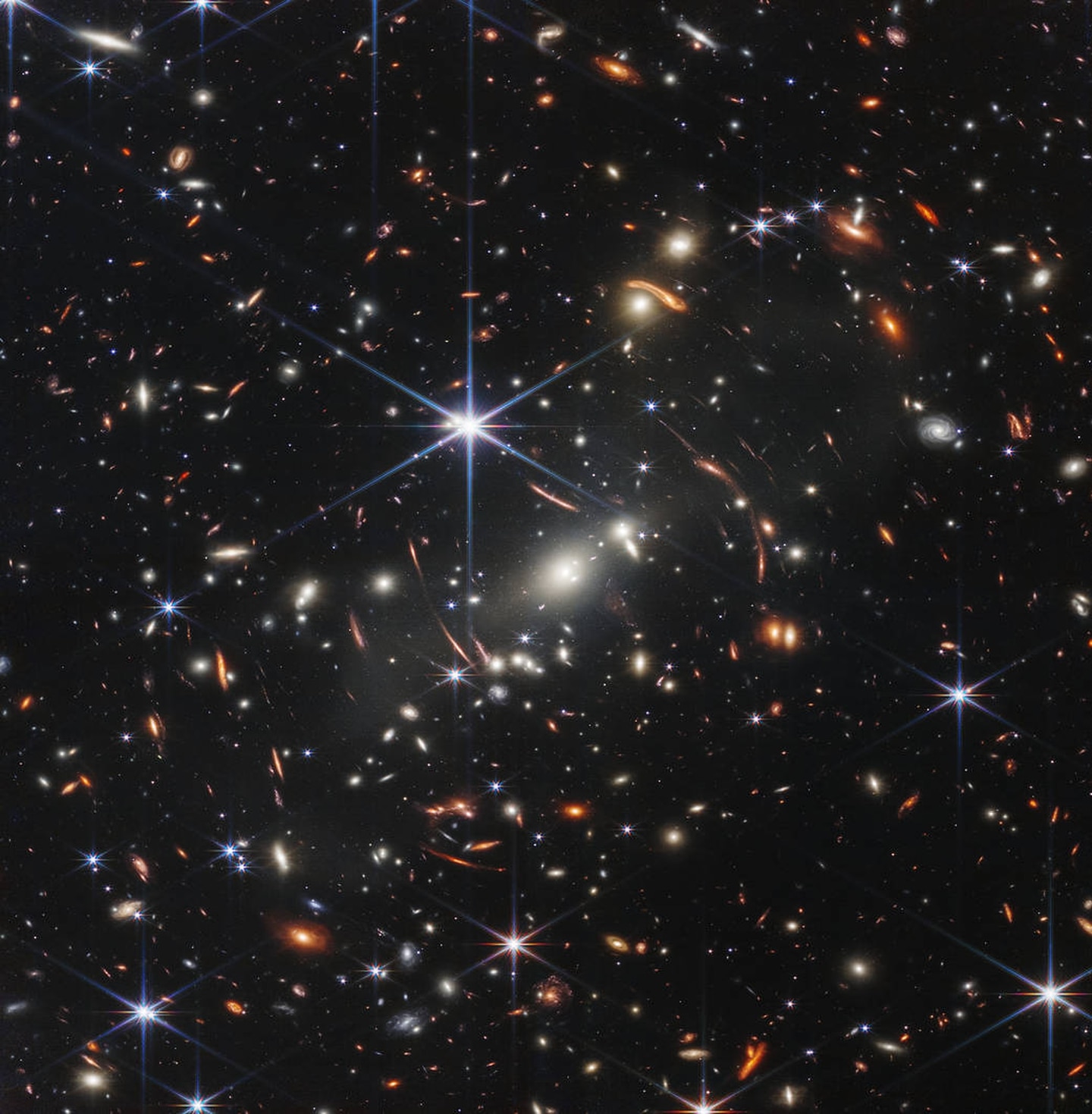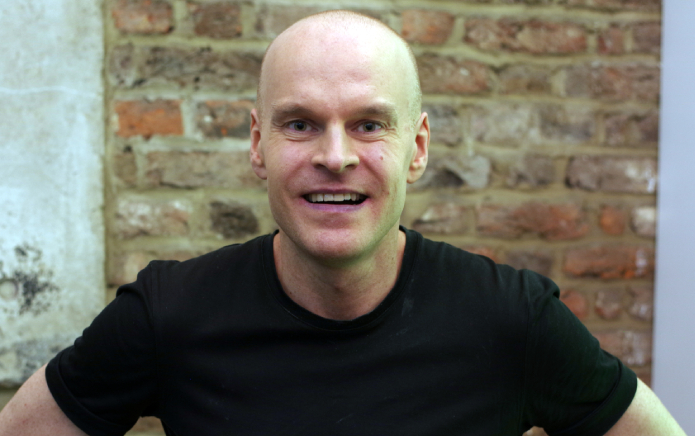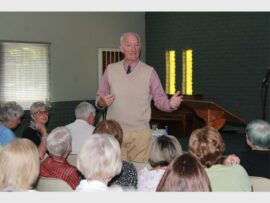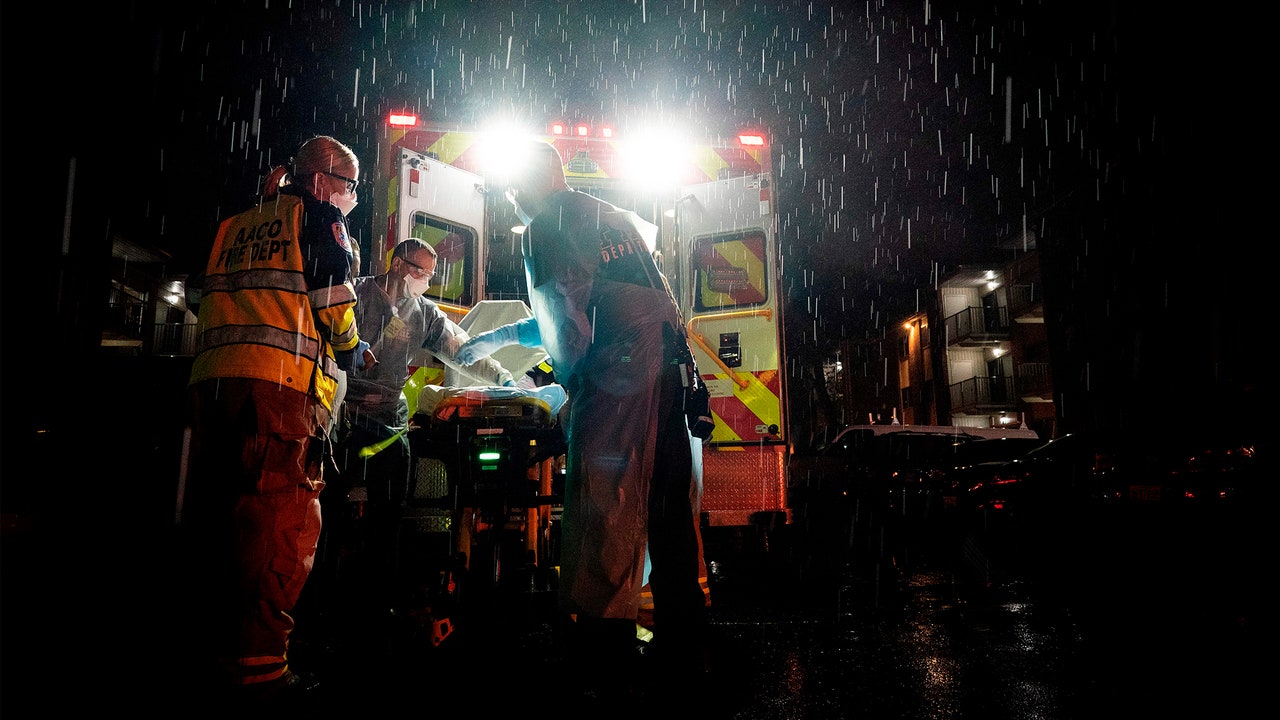Last Christmas, NASA delivered a gift to astronomers — and humanity — by launching the James Webb Space Telescope (JWST), a present that kept on giving the whole year through. The space agency’s largest and most powerful observatory has glimpsed both the farthest views of the early universe and up-close views of a spacecraft deflecting an asteroid only 6.8 million miles from Earth. And that’s only in its first months.
“It’s very fair to say the telescope has exceeded expectations,” said James Webb Space Telescope Project Scientist Klaus Pontoppidan of the Space Telescope Science Institute in Baltimore. “Almost across the board, we are actually doing better than the requirements. They are sharper images, ones we can see deeper. And it has really made a difference.”
A massive international effort made in collaboration with the European and Canadian space agencies, the telescope required the work of 20,000 people to build over 20 years. It was launched on an Ariane 5 rocket that delivered it so flawlessly into orbit that the maneuvering fuel saved on board the spacecraft will extend its life to about 25 years, instead of 10, according to Eric Smith, Webb program scientist at NASA Headquarters.
By almost every measure, JWST’s performance is better than expected, he said: “The lifetime is more than twice as long as expected. The vision is twice as sharp. It is going to be about 25 to 30 percent more sensitive, so we can see fainter or get a certain exposure level better. It’s more stable, about seven times more stable than we thought.” That means that astronomers wait less time to capture data after aiming the telescope, making its operations more efficient.
ADVERTISEMENT
“You just move it and ‘boom,’ you’re ready to go right away,” said Smith. “That makes us feel better about future telescopes, too.”
In its first six months of operation, the only bumps in the road for JWST have come from micrometeorite strikes. The space telescope, its 18 mirrors unfolded to measure over 21 feet wide, orbits the sun some 1.5 million miles away from Earth at a stable gravitational point considered pristine compared with the increasingly debris-filled orbit around Earth. But a big micrometeorite strike in May convinced engineers to turn the observatory away from the direction of its orbital motion, a bid to minimize the impacts of fast-moving space dust hitting its mirrors head on. “Just like you don’t stick your face out of the car window when it’s moving,” said Smith.
Launched on Christmas Day 2021, the $11 billion space telescope overcame years of delays and cost increases to unfurl those mirrors flawlessly in a 178-step origami exercise in space, before revealing its first images in July. A parade of discoveries has followed. Here are some of the highlights.
Deep field
:quality(100)/cloudfront-us-east-1.images.arcpublishing.com/thesummit/IUCEACHTKVDU3PPTARP7K4VVM4.jpeg)
From the start, JWST showed off its power, roughly 100 times stronger than the Hubble Space Telescope, with its own “deep field” image of distant galaxies — the islands of stars that fill space like our own Milky Way — to compare with ones from its storied predecessor, the Hubble Space Telescope. The farther away the telescope can see, the farther back in time it is looking, because the speed of light, while very fast, is limited. That’s why the JWST deep field contains galaxies that date to just a few hundred million years after the Big Bang (which happened some 13.8 billion years ago) among the fainter ones in the image. The view is centered on a closer-in massive galaxy cluster whose gravity bends the light from more distant galaxies, stretching them into distorted, elongated, dimensions. Yet this image spans a swath of deep space equivalent to only a speck of sand held up to the sky.
Hubble has produced a series of ever-deeper deep field images in the last three decades, only to be outdone, as intended, by the JWST. The “gravitational lensing” of the light from these more distant, distorted galaxies magnifies starlight from even more older epochs farther away than just a normal view of the sky would allow, an optical effect predicted by Albert Einstein. So, you might expect to see more deep field images in the years ahead as the JWST’s operators refine their control of the spacecraft and take advantage of future gravitational lensing opportunities.
ADVERTISEMENT
Fiery hourglass
:quality(100)/cloudfront-us-east-1.images.arcpublishing.com/thesummit/B2WXGZ4J5ZGI7DIKZIV3A2OIWA.png)
Unlike Hubble, JWST operates in the infrared spectrum, allowing it to peer through clouds of dust and gas that hide the inner workings of stars. A beautiful example came in the “fiery hourglass” of the young “protostar” L1527, only 10,000 years old. A nascent solar system being born can be seen on its side cutting a line across the center of the infant star, which is viewable only as a dark cloud in other wavelengths of light, like the visible spectrum seen by Hubble.
Our own solar system was born in a similar conflagration roughly 4.6 billion years ago, said Pontoppidan, who called the hourglass an early favorite. The image adds to observations suggesting that planets form very early in the lifetime of stars, something that was uncertain only a few decades ago. “Every telescope is a time machine in a way. It’s not like we are seeing our own solar system being born, but here we are seeing one very much like it in its earliest moments.”
Early galaxies
:quality(100)/cloudfront-us-east-1.images.arcpublishing.com/thesummit/2RV2CK3DYJEN7C2EKAYFSD57VM.png)
One of the chief missions of the JWST is to probe the era of the very first stars, ones born soon after the origin of the universe. And in its first months, initial observations of the epoch have served up a puzzle. The first JWST observations of galaxies in existence some 350 million to 450 million years after the origin of the universe found they were bigger and brighter than expected — as well as easier to find. “It’s kind of like we walked into the nursery and we saw toddlers. So it’s like, ‘What’s going on here?’” said Pontoppidan. “There doesn’t seem to be an explanation for that right now.”
For the early galaxies to be so bright, they must have been born only 100 million years or so after the fading of the Big Bang’s afterglow, in a “dark age” when the universe was mostly filled with clouds of hydrogen gas. “This is probably the most exciting science from the telescope so far,” he added. “It’s not something you see straight up in an image, it’s something that requires careful analysis, but I’m certainly, and this is not even my own area of science, struck by this incredible power we have to see the most distant galaxies in the universe.”
Pillars of creation
:quality(100)/cloudfront-us-east-1.images.arcpublishing.com/thesummit/LSSDGG53WNHSVLNR75T2JIJCHE.png)
Awe-inspiring images don’t get much more jaw-dropping than the JWST view of the “Pillars of Creation” released in October, a dust-shrouded view set within the Eagle Nebula, a stellar nursery some 6,500 light years from Earth. (One light year is about 5.9 trillion miles.) First observed by Hubble in 1995, the new image shows off the power of a “mid-infrared” instrument aboard JWST, which takes exquisite images of light in the middle of the infrared spectrum, as its name implies. Within the dusty swirls of the pillars, news stars are coalescing, some of them visible in earlier Hubble images taken in visible light. “In astronomy, you have to look at many kinds of light,” said Pontoppidan. “Nature isn’t nice to us. It doesn’t provide all information about a certain process of physical object or planet or whatever all in one nice area of the electromagnetic spectrum. We need all kinds of wavelengths,” which is why JWST is meant to work in conjunction with other observatories run by NASA and the European Space Agency.
The JWST instrument that took the Pillars image, the Mid-Infrared Instrument (MIRI), is pretty much the only one that has given operators any trouble, taking it partly offline until November, and reduced the pace of its operations. The problem slowed some investigations of newly forming planets in young solar systems, which will likely make news next year from JWST.
Exoplanet atmosphere
:quality(100)/cloudfront-us-east-1.images.arcpublishing.com/thesummit/YHOENNVMHZHQJK6CKNNVDBIAYA.jpeg)
Not so much an impressive image as an impressive measurement, JWST in August reported a first detection of atmospheric chemistry on a world orbiting another star. The light spectra from Wasp-39b, a “hot Jupiter” jumbo-sized planet closely circling its host star, reveal its chemical components, including signs of sulfur dioxide, a molecule made in its skies, as well as evidence of clouds there. Eight times closer to its star than Mercury is to the sun, Wasp-39b broils at about 1,600 degrees Fahrenheit. The space telescope also saw signs of clouds on another large hot planet called Wasp-96b, some 1,150 light years away, as well as signs of water vapor boiling away in 1,000-degree Fahrenheit temperatures.
A revolution in astronomy, the detection of thousands of “exoplanets” orbiting nearby stars accompanied the two decades of JWST’s development, shifting its focus from the early universe to also making discoveries in an exciting new frontier in science. In coming decades, astronomers hope a successor to JWST might spot habitable planets like Earth — or even atmospheric signatures of life — on one of these distant worlds. The detection of atmospheric chemistry on Wasp-39b as well as the first detection of exoplanetary carbon dioxide there, on a world some 700 light years away, suggests more of those measurements are coming, said Smith. “We now have spectra that are pushing what we know today.”
“That’s going to be one of the huge contributions of Webb,” he added. “Ironically, it’s something we didn’t even know about when we started. I like to say Webb was started before there were exoplanets. Of course, they were out there. We just didn’t know about them.”
As well, the telescope should start making spectroscopic progress on cooler, fainter, failed stars called brown dwarfs, or places where stars are forming. “It’s a murky area because we just didn’t have facilities sensitive enough to study them [until now]. So, I expect a lot of progress there, too,” said Smith.
ADVERTISEMENT
Southern Ring
:quality(100)/cloudfront-us-east-1.images.arcpublishing.com/thesummit/N5DYPNHWINHORNPUQAYAOI7BIY.png)
One of the most picturesque pieces of astronomical detective work done by JWST and a partner telescope, the European Space Agency’s Gaia observatory, dropped earlier this month, revealing the stars that shaped the oblong Southern Ring Nebula. In a kind of whodunnit that relied on Gaia’s observation, astronomers deduced the original weight of a dying star whose paroxysm blew out the center of the nebula. Once weighing three times as much as our sun, it is now down to 60 percent of its heft.
The culprits in the case are a pair of companion stars circling this central one, which blasted off jets of star stuff from the material sloughed off their victim, carving out the center of the nebula and giving it a curious double-curved shape. Even astronomers found this kind of dramatic, releasing a paper entitled “The messy death of a multiple star system and the resulting planetary nebula as observed by JWST,” in the journal Nature Astronomy to describe the crime scene.
Less trouble than Hubble
In 1990, the Hubble Space Telescope launched with lenses that turned out to be out of focus, an unpleasant on-orbit discovery. The screw-up led to congressional hearings and a dramatic ophthalmological repair mission in space three years later. So far, JWST’s optics have outdone expectations, which is a good thing because no astronaut repairs are possible at its distance from Earth. The only big worry on orbit is micrometeorites, as mentioned, and the trailing debris cloud from Halley’s Comet, which JWST could pass through in May of 2023 and 2024.
On Earth, debate has swirled over the name of the telescope — which unusually honors a former NASA administrator, James Webb, rather than a scientist — with criticism of Webb’s role in the federal government’s persecution of gay employees during the Cold War. In November, the space agency decided not to rename the telescope, releasing a report that NASA Administrator Bill Nelson said in a statement found “no available evidence directly links Webb to any actions or follow-up related to the firing of individuals for their sexual orientation.”
The first burst of images from JWST were predisposed on conservative expectations of its performance, said Smith, with newer proposals aiming to take advantage of the better-than-expected capabilities of the telescope. Its extended lifetime also has astronomers contemplating multiyear observation campaigns of stars and galaxies that seemed unrealistic before.
ADVERTISEMENT
Compared with the initial angst over Hubble, JWST’s launch has brought both “relief and excitement,” said astronomer Richard Fienberg, a senior adviser to the American Astronomical Society. “The images are even more spectacular than anyone dared imagine, and the rapidity with which astronomers have jumped on the data and made important discoveries is breathtaking.”
Thanks to Lillian Barkley for copy editing this article.








